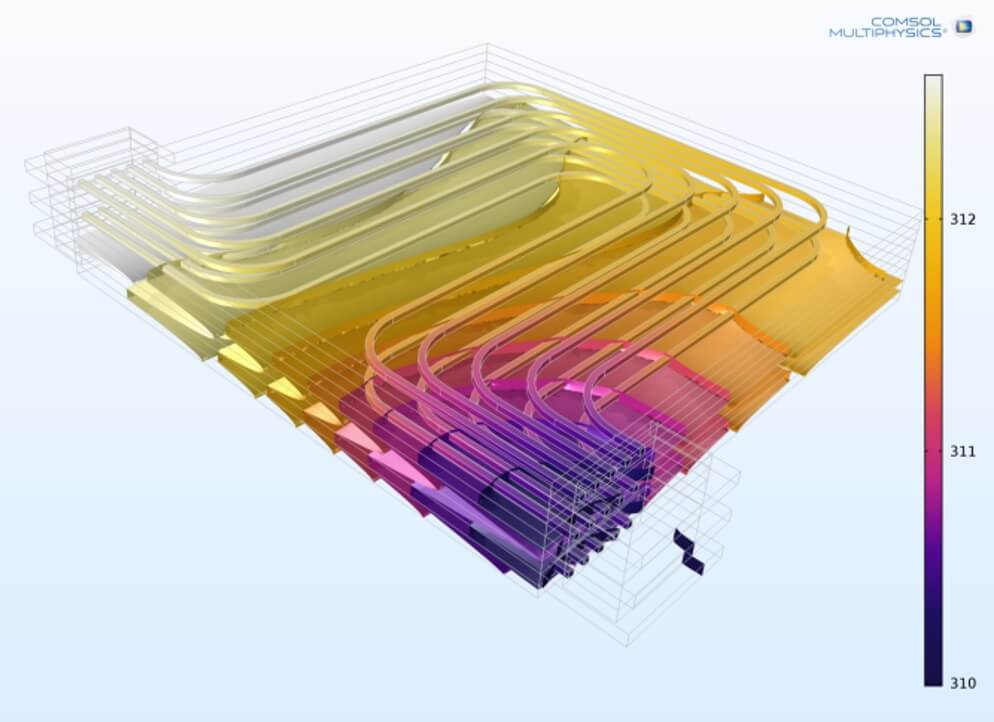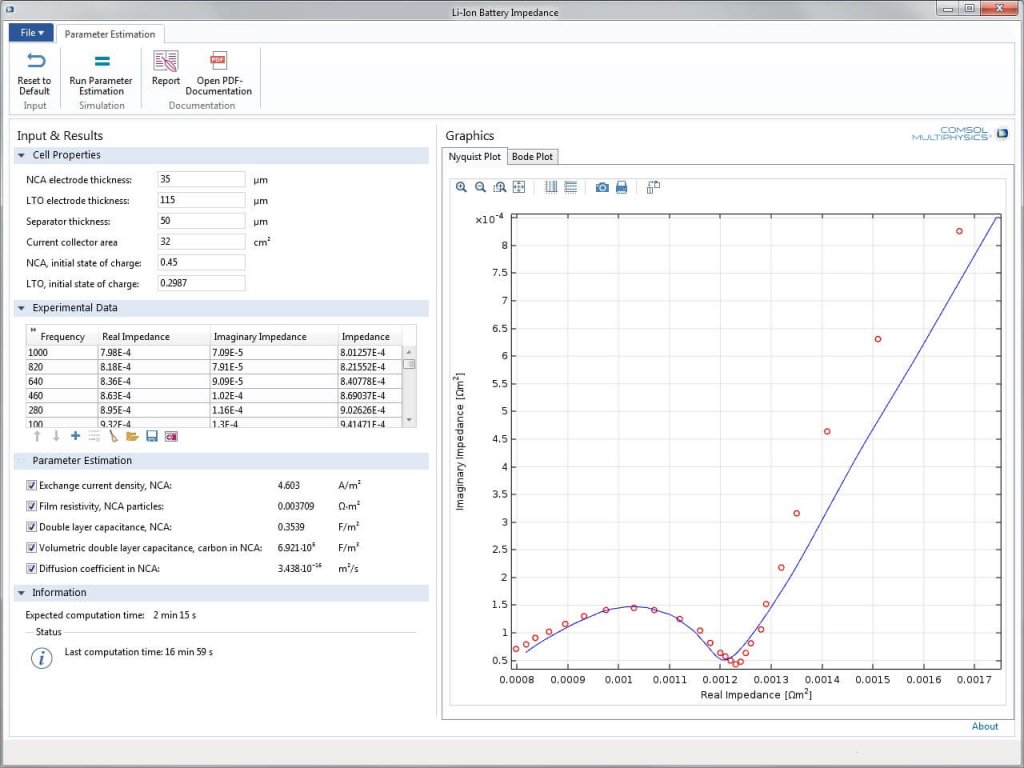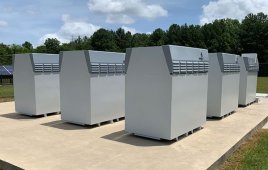The biggest challenges for battery design are energy density, power density, charging time, life, cost, and sustainability. Modeling and simulation are efficient methods that can assist researchers, developers, and designers in meeting these challenges.
Ed Fontes / CTO COMSOL
Energy density is limited by the battery’s chemistry, which even without losses limits the theoretical energy density. The chemistry is defined by the electrode material and the composition of the electrolyte. Lithium-air batteries get close to the energy density of gasoline, which is probably close to the maximum energy density for a battery. However, the components required for thermal management and current collection contribute to the total weight of the battery system. The design of these components can substantially influence the energy density of a battery system.
Power density and fast recharge
The power density of a battery is important for the efficiency of electric vehicles. A high power density is required to recapture high amounts of energy in a short time during regenerative braking or fast recharge. This gives a difficult optimization problem because the system has to cope with very high current densities during recharge and relatively low current densities during discharge. It also relates to the design of the thermal management and the current collectors mentioned earlier. In addition, the design of fundamental battery components such as the electrodes, separator, and electrolyte are of great importance for power density.

The multiphysics simulation is for the temperature profile in a liquid-cooled battery pack. Fluid flow and temperature are modeled in 3D and a lumped 1D model of the Li-ion battery is used to calculate the heat source.
Furthermore, the model above is to optimize the channels in the cooling plates of a battery pack. This a common application in the automotive industry. Fiat Research Center, for example, uses mathematical modeling for studying thermal management of pouch cells for hybrid vehicles1.
Life, reliability, and safety
Life is a major consideration where safety and reliability are closely related. Discharge, wear, and failure should occur slowly and in a controlled and transparent way. This is not only an issue of the chemistry of the battery but also of the design, since uneven current density distribution and poor control of discharge/recharge and of the thermal management system may accelerate wear and increase the risks of failure. Short-circuits formed by metal deposition may be responsible for a decrease in performance as well as an increased risk for runaway heating. Technologies for state-of-health monitoring are required in order to continuously assess the state of the battery system and the risks of failure.
Costs
The manufacturing process for high-power batteries and electric powertrains is not as optimized as for mechanical powertrains for combustion engines. There is a larger potential in productivity gains and decreased costs by large-scale production in the manufacturing process for the battery components.
Sustainability
The development of new batteries has to include the aspect of sustainability. There has to be a strategy for mining, recycling, producing, and disposing of new battery types. This is primarily a legal matter for governments, but also a commercial consideration for battery manufacturers and automotive companies.

The goal of this application is to explain experimental electrochemical impedance spectroscopy (EIS) measurements and show how to model and make measurements that estimate the properties of lithium-ion batteries. The application takes experimental data from EIS measurements as input, simulates these measurements, and then runs a parameter estimation based on the experimental data. Pick on the image of a more readable version.
Modeling and simulation
The understanding and optimization of fundamental components of the battery; such as electrodes, electrolyte, and a separator; can be accelerated using modeling and simulations. The systems for thermal management, current collection, and state-of-health monitoring can also be developed with high-fidelity multiphysics simulations.
Fundamental studies of battery components, as well as the development of state of health methods, can be very efficiently carried out by combining experimental measurements of electrochemical impedance spectroscopy (EIS) with mathematical models, see the article from the French research institute CEA2. Figure 2 shows an app, where experimental data can be imported and used in a physics-based model of EIS. This allows for the estimation of parameters such as activity of the electrodes, surface area, electrical conductivities of the different components, mass transport properties of reactants and products, and state of charge of the electrodes.
For further reading:
- The Thermal Management of Li-ion Battery Packs. Michele Gosso, Antonio Fiumara. Fiat Research Center, Orbassano, Italy. COMSOL News (2012), 48-49.
- Highly Accurate Li-ion Battery Simulation. Mikael Cugnet. French Atomic and Alternative Energy Commission (CEA), France. COMSOL News (2013), 44-45.
Ed Fontes is the chief technology officer at COMSOL. He has been with COMSOL since 1999, and was previously the lead developer for the CFD, heat transfer, and chemical engineering products. He received his PhD in chemical engineering from the Royal Institute of Technology, Stockholm.
Filed Under: Energy storage




